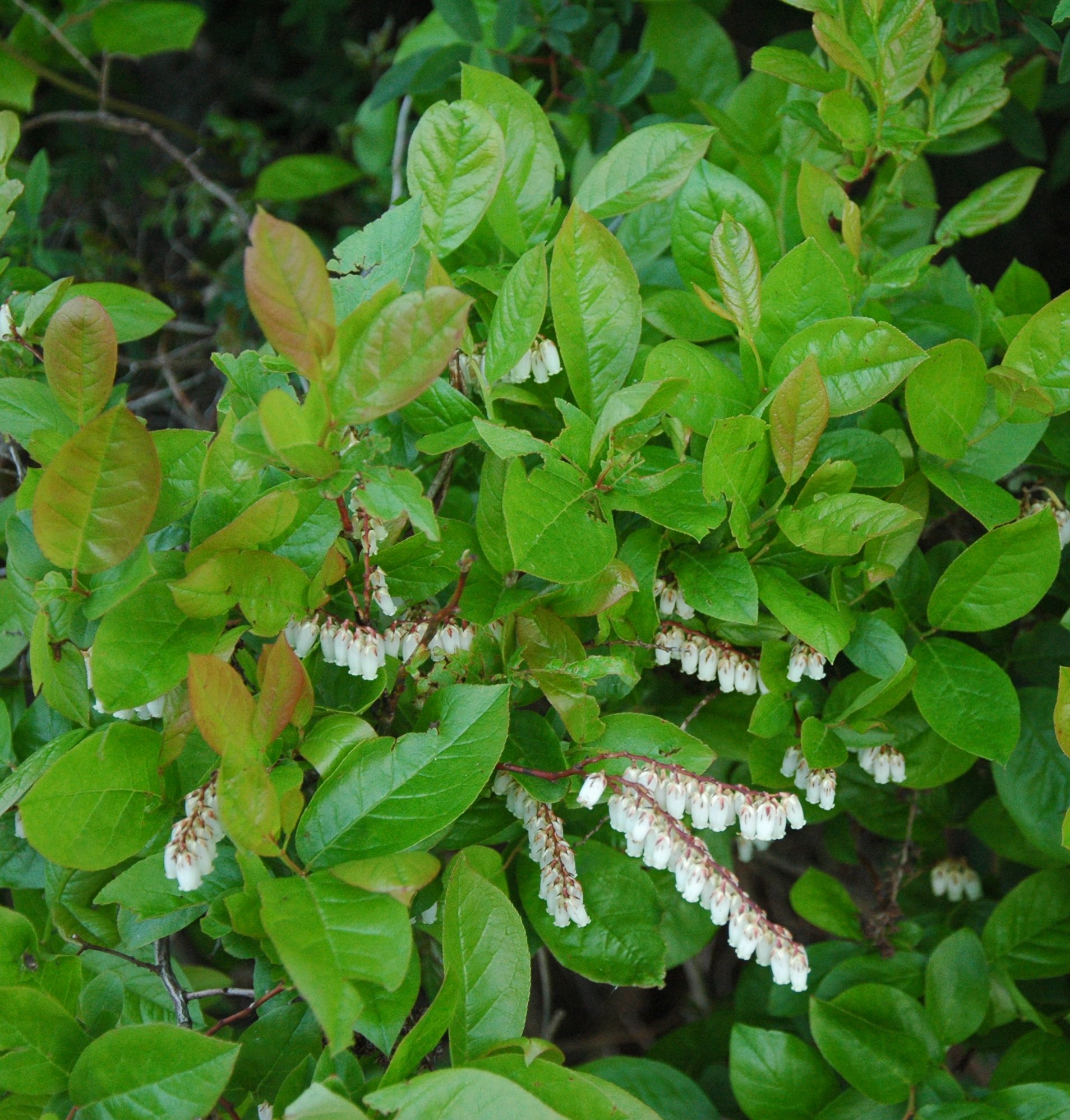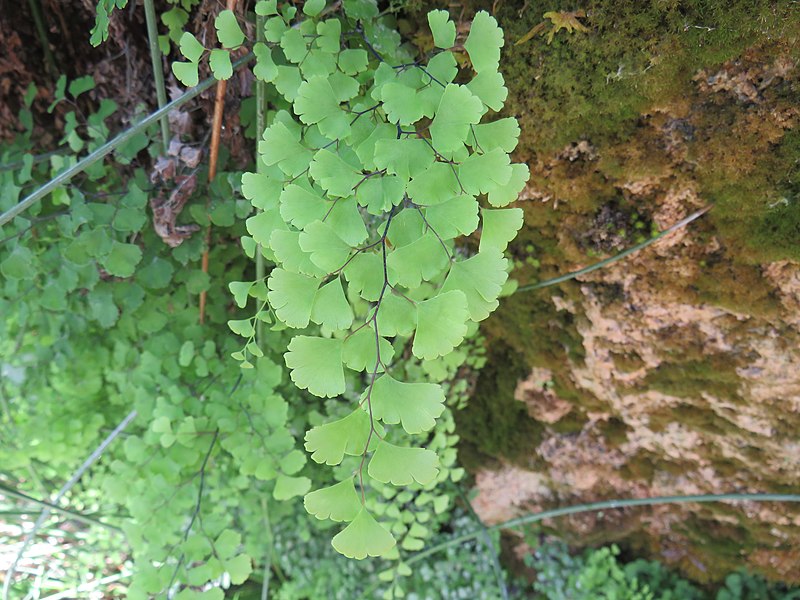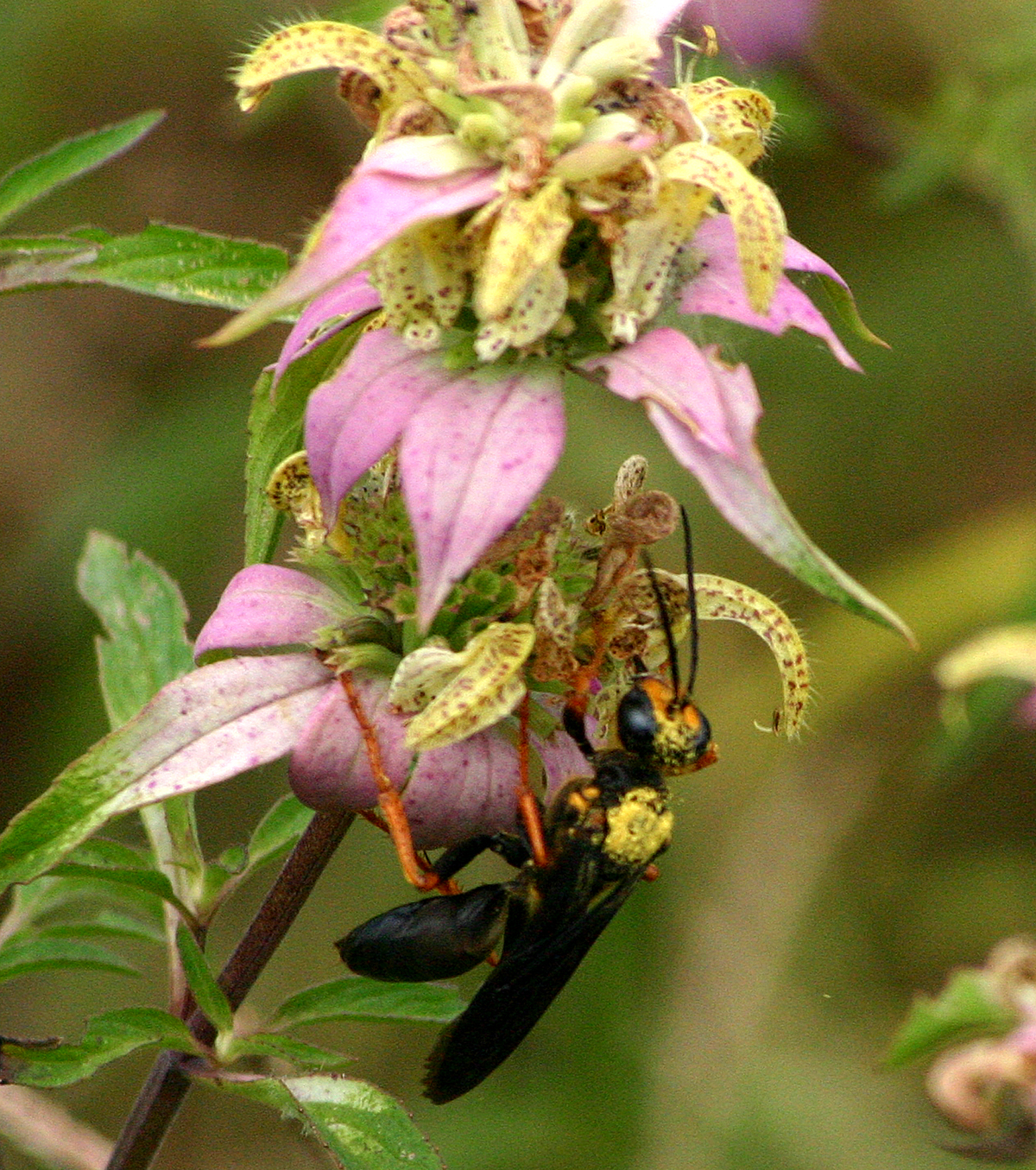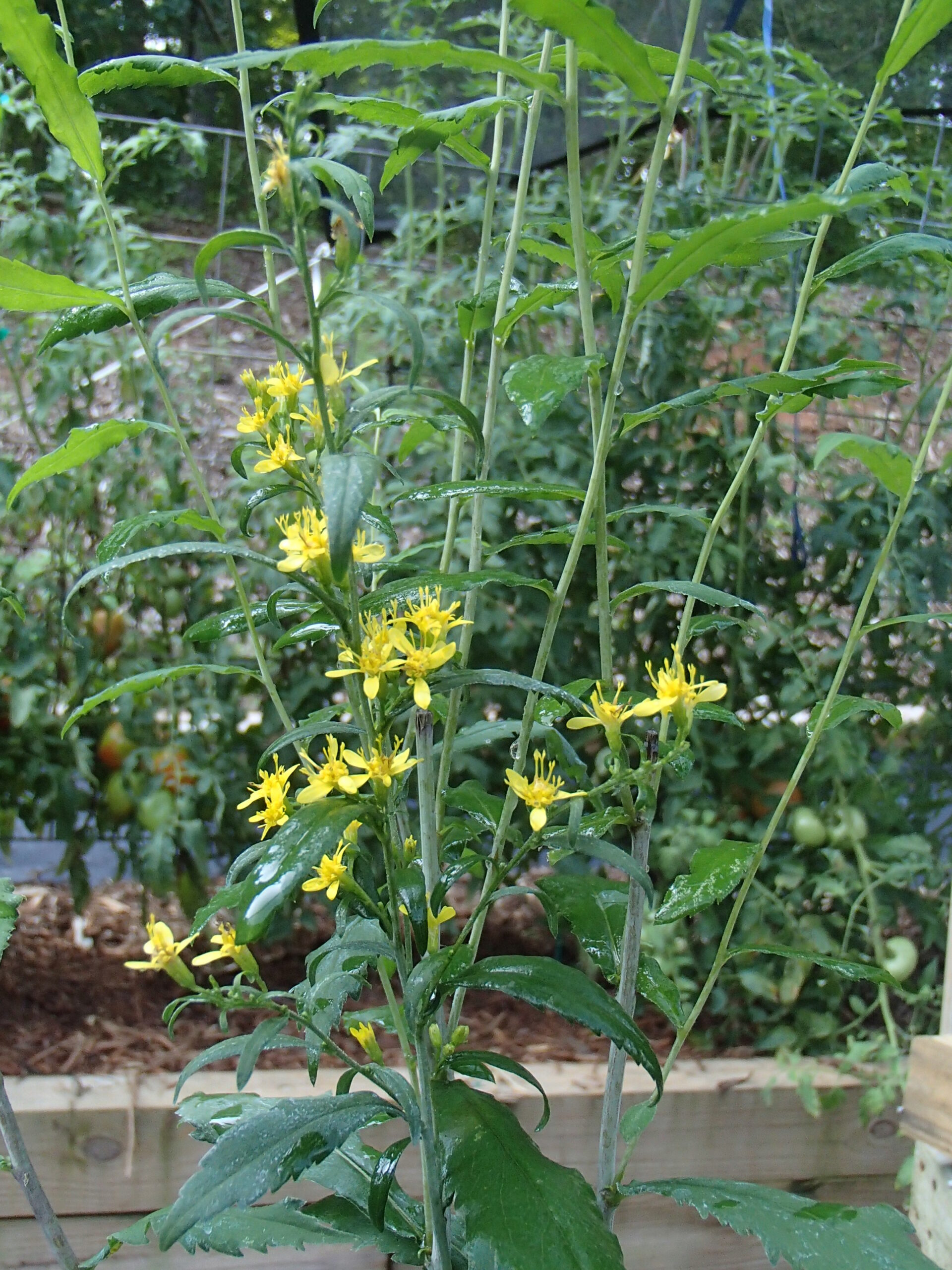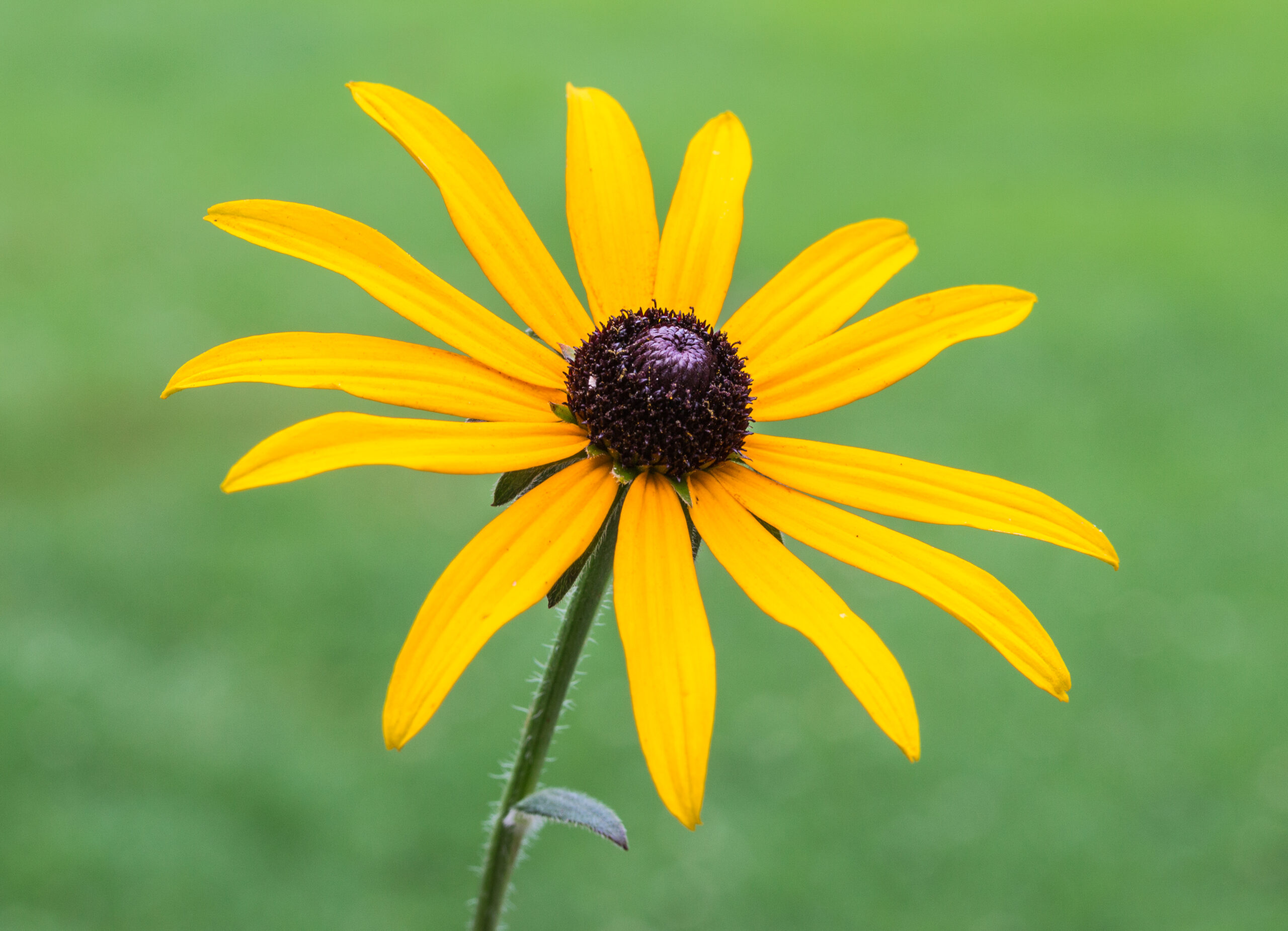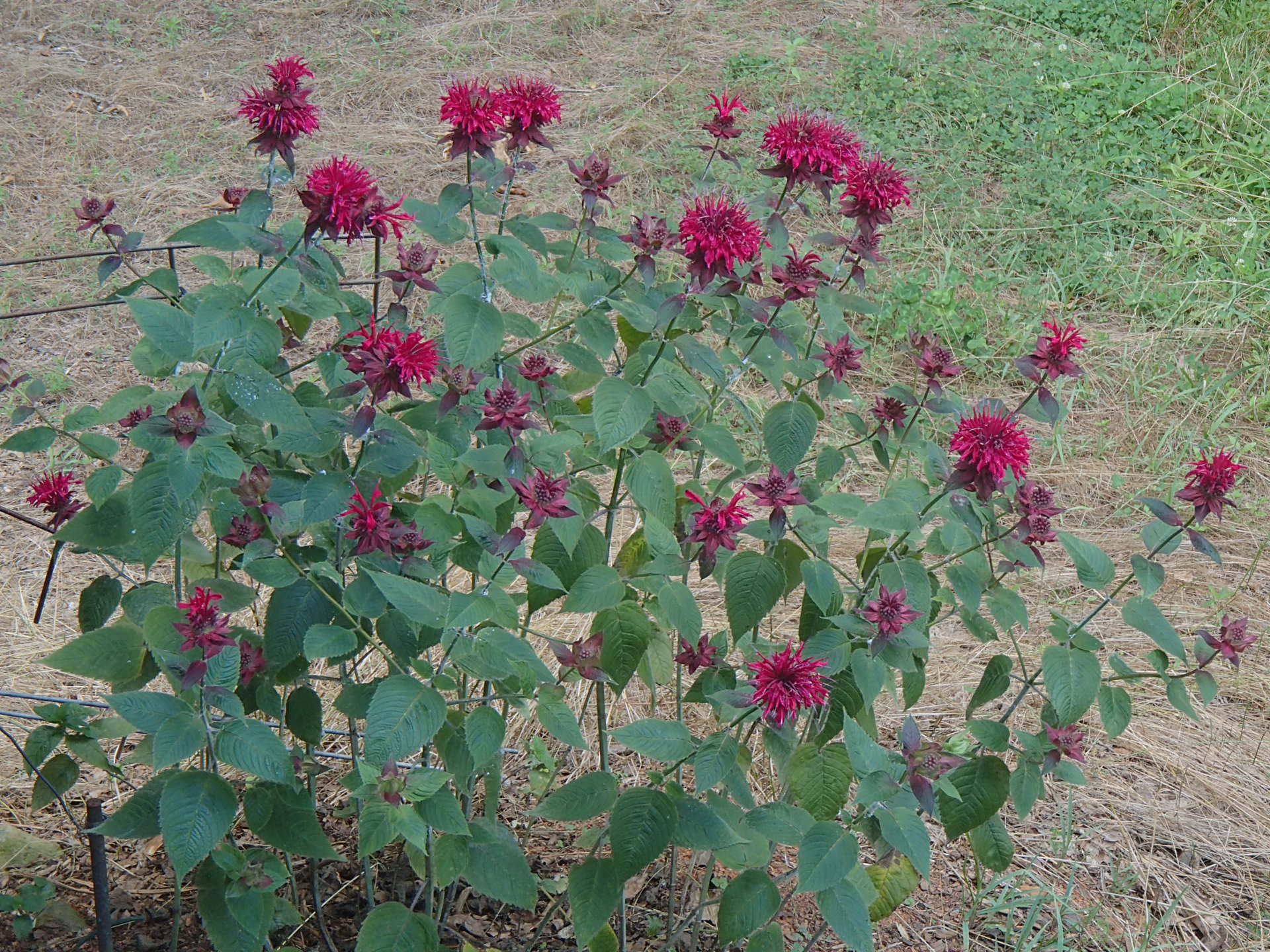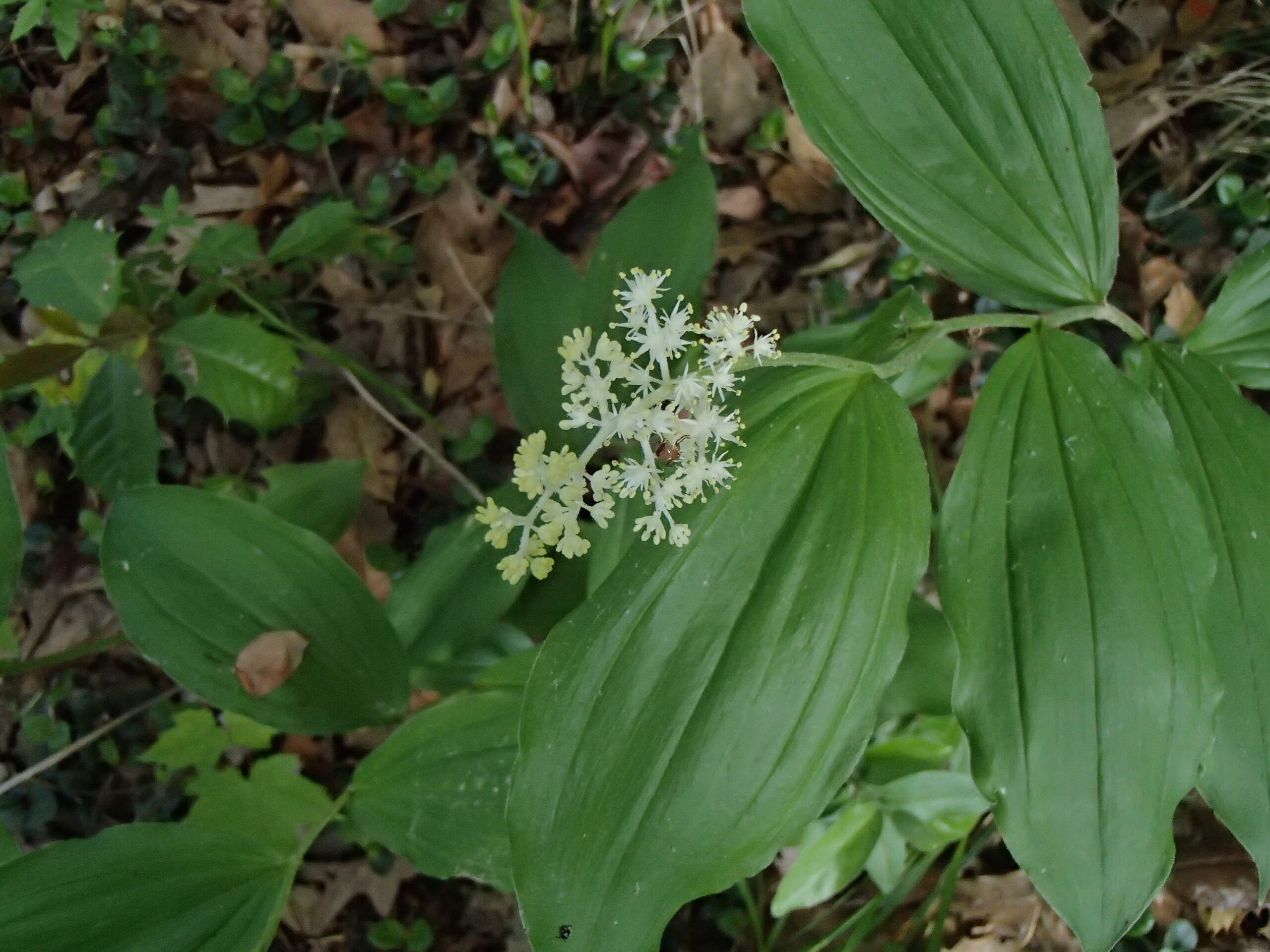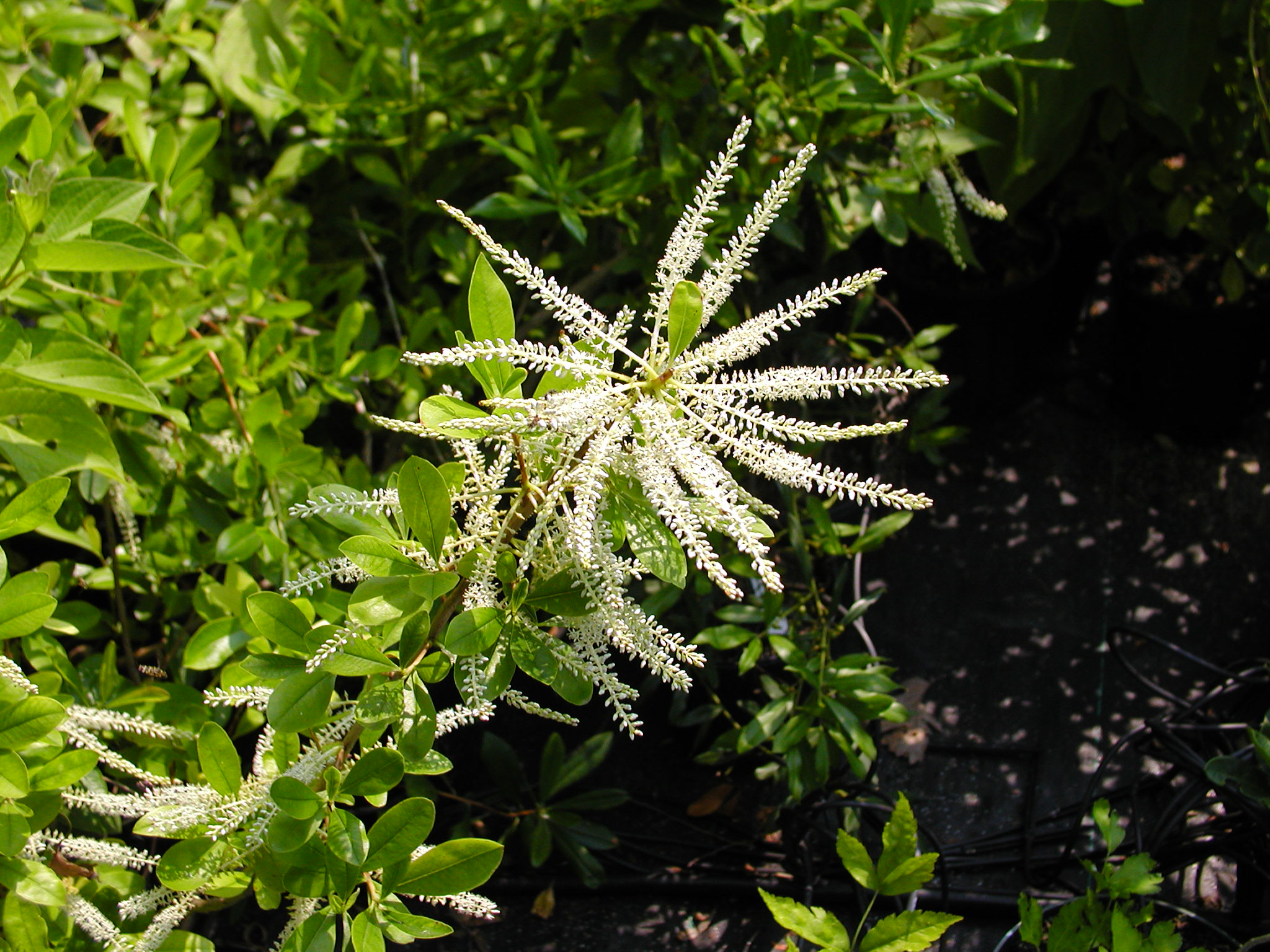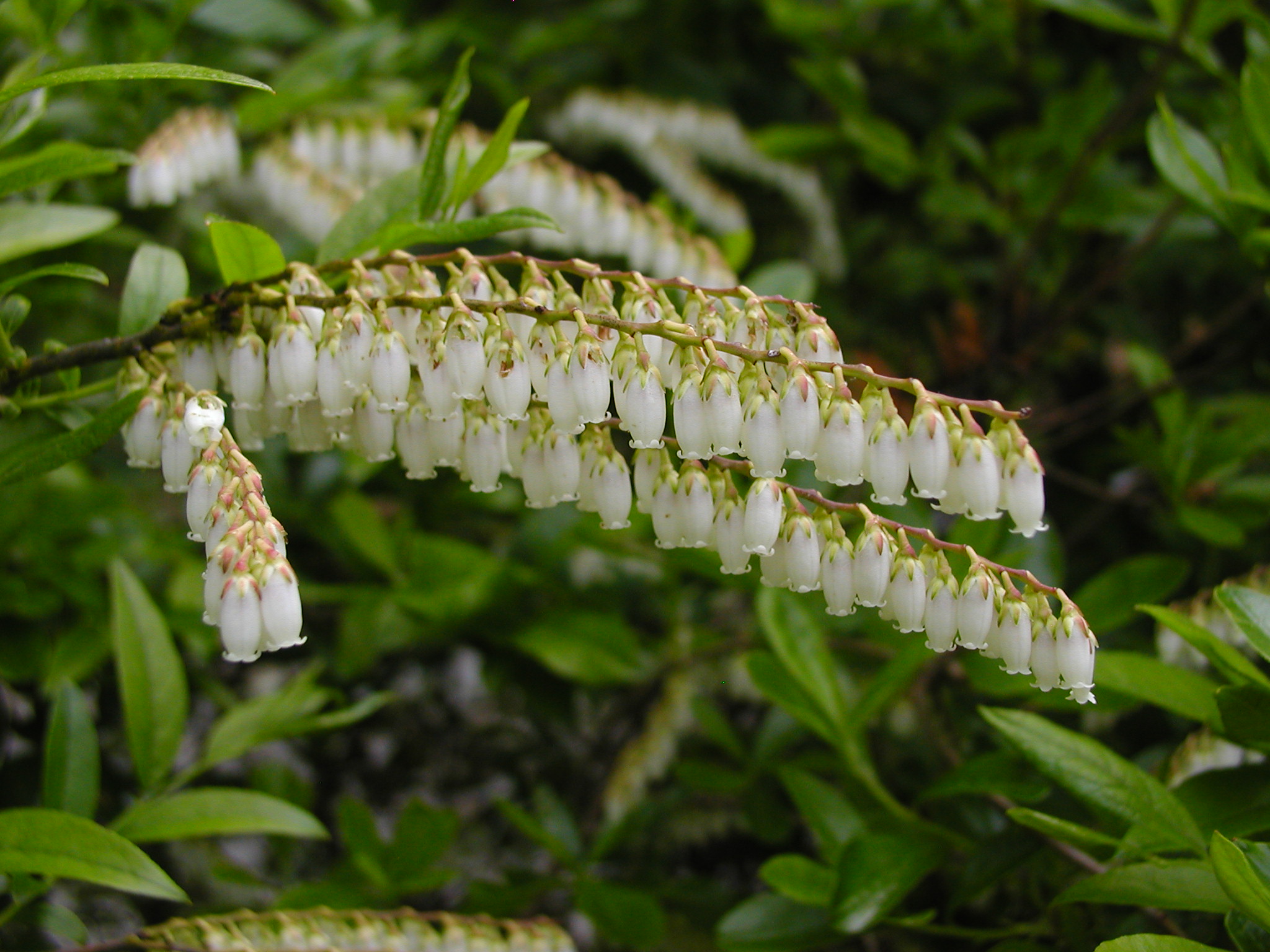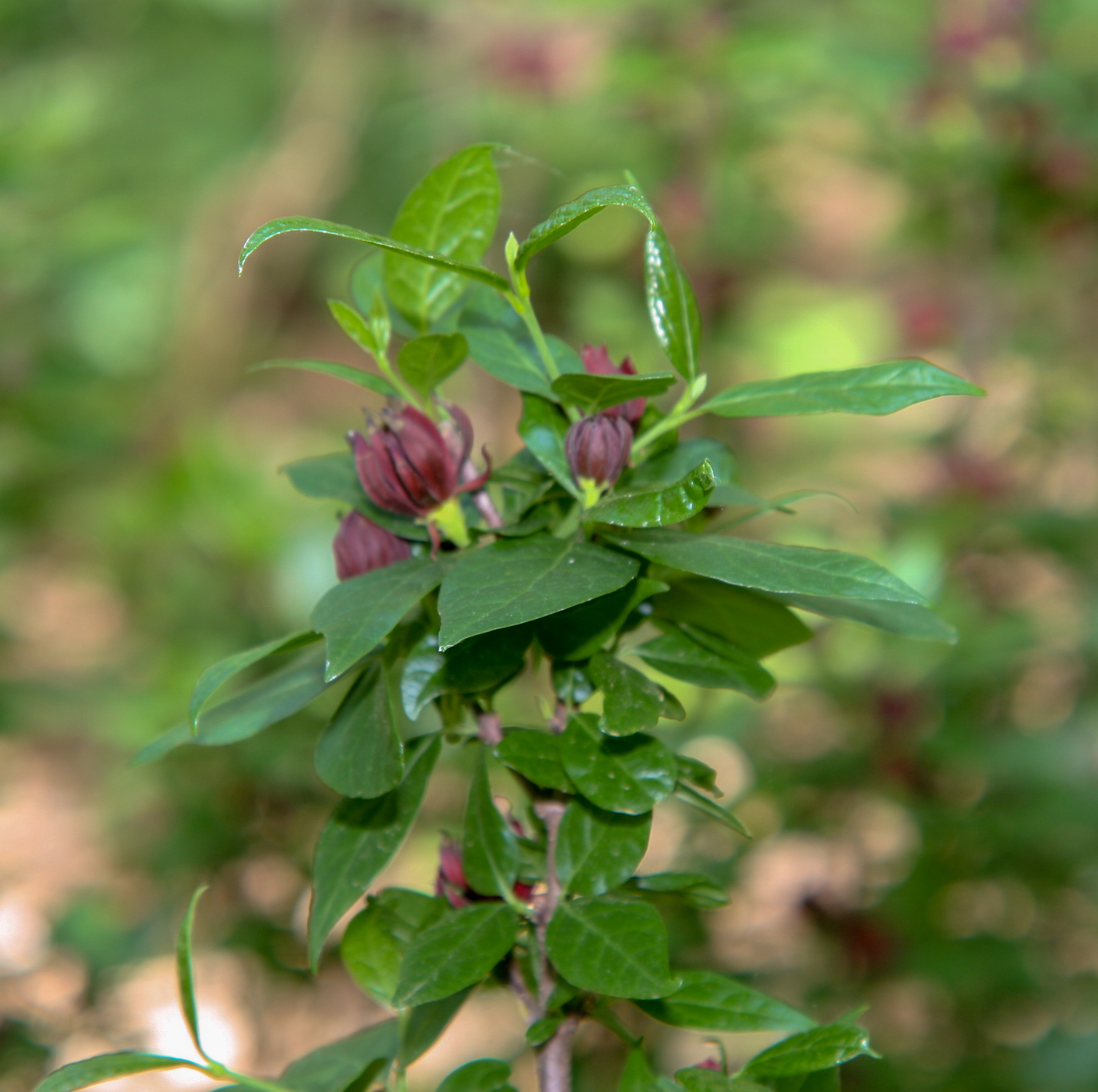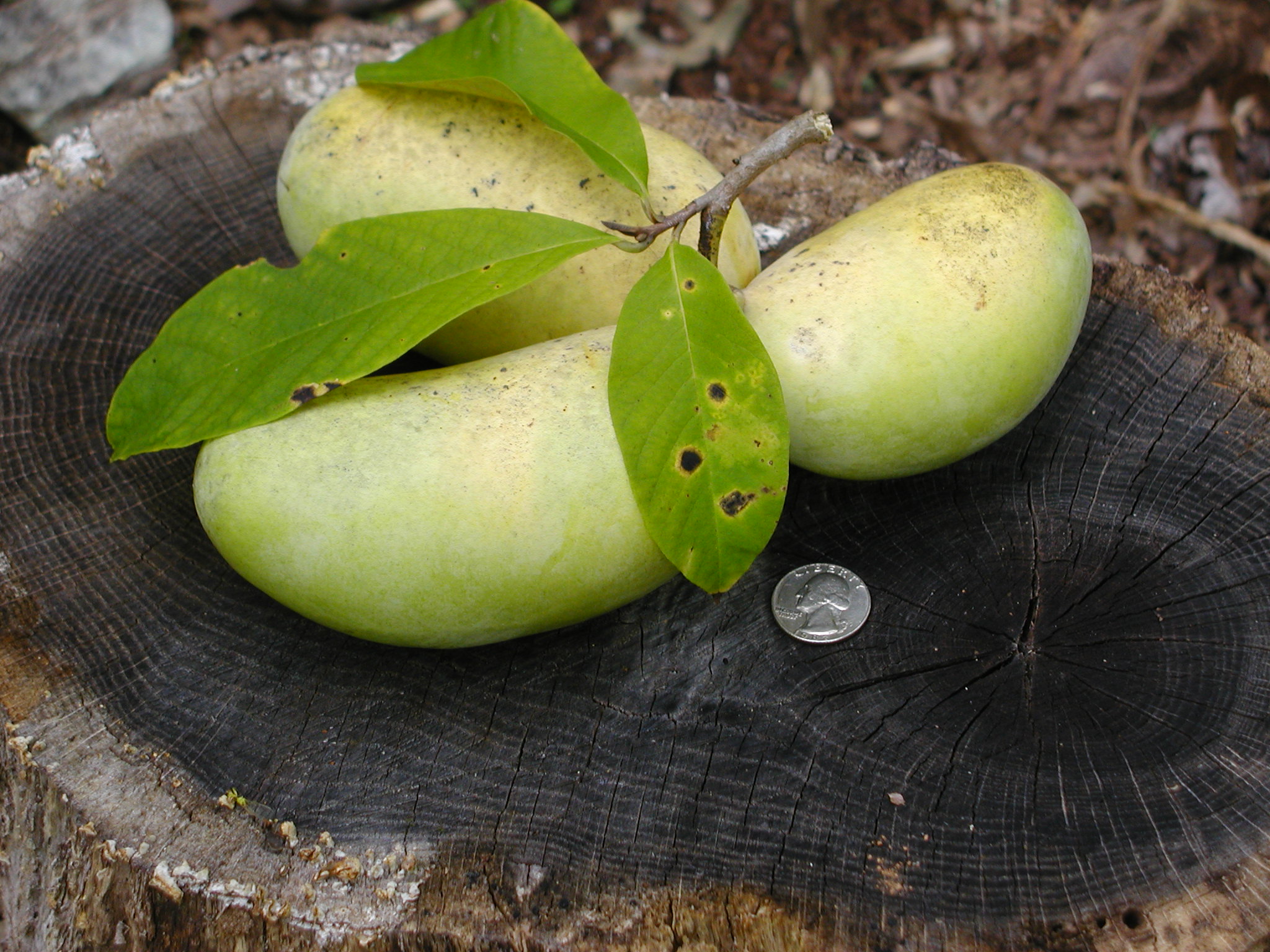NURSERY HOURS
Wednesday: 10-4 Thursday: 10-6 Friday-Saturday: 10-4 Sunday: 12-4
November 13, 2021
Lyonia mariana
Piedmont Staggerbush is a cute little shrub, averaging three to six feet tall. It is an upright shrub with alternate, simple, and oblong leaves. The flowers bloom in clusters of racemes of columnar-shaped, white to pink flowers. It grows well along marshes and shrubby swamps, but also wood edges and well-drained…
November 12, 2021
Kosteletzkya pentacarpos, previously known as Kosteletzkya virginica
Seashore Mallow is a lovely, salt tolerant herbaceous perennial (some call it a subshrub) native to the Eastern shore of the U.S. The toothed, roughly triangular leaves and stems are softly hairy with tiny stellate (star-shaped) hairs. An obligate wetland plant, it thrives in full sunlight and wet soil. It is…
August 2, 2021
Aronia prunifolia
Aronia prunifolia or Purple Chokeberry is a natural hybrid between A. arbutifolia (Red Chokeberry), and A. melanocarpa (Black Chokeberry), a more mountainous species. All three Chokeberries have very diferent distribution maps. Purple Chokeberry is much less abundant than the Red Chokeberry. It is much like Red Chokeberry in habit, that is,…
August 2, 2021
Adiantum capillus veneris
Southern Maidenhair Fern is a clumping, deciduous fern cultivated worldwide for its delicate, frilly looks and hardy nature. It is native to a huge part of the Earth, in temperate and tropical regions from the Southern half of the U.S. to Central America, South America, Europe, large parts of Asia and…
July 1, 2021
Arisaema triphyllum
Jack in the Pulpit is easily recognizable and is a unique spring ephemeral. The fleshy stalk and leaves lend an almost tropical aura to the plant. This perennial plant is about 1-2′ tall and wide. It loves part to full shade in woodland gardens and moist to wet conditions. Flowering plants…
June 20, 2021
Monarda punctata
Horsemint or Spotted Beebalm is an erect, mostly unbranched, perennial wildflower, instantly recognized by its unusual “stacked” arrangement of multiple whorls of two-lipped, cream-colored, purple-speckled tubular flowers on the same stem. Each whorl is subtended by attractive and persistent pink to lavender leaf-like bracts. Leaves are narrow with a fine grayish-white…
April 29, 2019
Diervilla ‘Troja Black’
Mountain or Georgia Bush Honeysuckle is a selection of our native Bush Honeysuckle, a small shrub endemic to our southern Appalachians. This low, spreading shrub (3-4’h x 3-5’w) with an arching habit grows well in full sun to part shade at lower elevations like our Piedmont as well as in the…
April 29, 2019
Helianthus ‘Mellow Yellow’
Swamp Sunflower is a clump-forming, upright, late-blooming perennial sunflower — the latest flowering of the sunflowers (October and even November). It is found in bottomlands, swamps, and other natural wet habitats as well as in disturbed wet areas, on roadsides and in ditches. It thrives in full sun in moist soils…
February 28, 2019
Vaccinium corymbosum
The beloved Highbush Blueberry is a deciduous shrub native to much of Eastern North America, with outstanding landscape value over three seasons. It’s clusters of dainty, hanging, bell-shaped, white-pink flowers are lovely in spring, followed by tasty blue berries that ripen in summer. These are valued by humans, birds, and smaller…
February 28, 2019
Vaccinium darrowii ‘Rosa’s Blush’
Rosa’s Blush’ is a cultivar of a small Vaccinium species native to sandy pinelands and sand dunes in counties along the Gulf Coast as far West as Louisiana, and frost tolerant to zone 8a (some say, zone 7). There is disagreement as to whether this shrub should be grown for its…
February 28, 2019
Xanthorhiza simplicissima
Xantho (yellow) rhiza (root) simplicissima (most simple, as the stems are unbranched) — what a wonderful name!! — is a very interesting, deciduous, rhizomatous subshrub native to shady, damp depressions and stream banks in wooded habitats throughout the mountains and piedmonts of our Southeastern states. It has lacy foliage to a…
February 28, 2019
Yucca filamentosa
Adam’s Needle is a broadleaf evergreen, suckering shrub from the Southeastern states. Although stemless, it has a rosette of stiff, sword-shaped leaves with loose filaments attached at the leaf margins, which distinguish it from other members of the genus. While these leaves reach only 2-3 feet in height, the flower stalks…
February 28, 2019
Penstemon digitalis
This herbaceous perennial is most rewarding to grow. From an attractive persistent basal rosette, vigorous, sturdy stems with dark green foliage rise to about 3 feet, terminating in branched panicles of numerous, showy, bright white, 1-inch tubular flowers which last a long time for an early season plant (spring to early…
February 28, 2019
Stylophorum diphyllum
Beautiful Wood Poppy is reported in a number of scattered counties centering on Kentucky, Indiana, and Illinois, peripherally in Tennessee and Virginia — close to, but not actually occurring in NC. Named (“diphyllum”) for a pair of deeply lobed leaves just below the 1-2- inch bright yellow, delicate flowers, the Wood…
February 28, 2019
Symphoricarpos orbiculatus
Coralberry is a very showy colonial shrub native in the eastern and central United States, as well as central Canada (Ontario) and northeastern Mexico. It reaches 4+ feet, with smooth, opposite, dull green, oval-shaped leaves and shreddy bark. Greenish white flowers are tucked under the leaves in early summer, developing later…
February 28, 2019
Symphyotrichum cordifolium
The common Blue Wood Aster (of which ‘Avondale’ is a cultivar) is an herbaceous perennial native to a huge swath of north-central-eastern North America, and the counties in NC where it is reported represent the southeastern tip of its range. Found in dry to moist (well drained) deciduous woodlands and woodland…
February 28, 2019
Sisyrinchium angustifolium
Blue-Eyed Grass is a graceful and fetching herbaceous perennial in the Iris family which resembles a small bunch grass — until it flowers. Blue, 6-parted, with pointed tepals (petals and sepals) with golden centers, the distinctly not-grassy flowers are held on flattened, branched flower stalks just a bit above the straplike…
February 28, 2019
Solidago caesia
Wreath (or Bluestem) Goldenrod could have been so named for its plant form, growing to 2-3′ in gracefully arching, mostly unbranched shoots with bright flowers positioned in the axils of leaves all along the stems. It is smaller and less aggressive than most of its cousins, and more suitable for cultivation…
February 28, 2019
Solidago odora
Sweet Goldenrod is found in open woods and savannahs in coastal states from New Hampshire south to Florida and over to east Texas, and inland as far as Missouri. (In northern Florida there is a separate subspecies, Chapmanii.) It occurs in most of the counties of NC. Sweet Goldenrod grows to…
February 28, 2019
Spigelia marilandica
This plant is not currently for sale. This is an archive page preserved for informational use. Indian Pink is a beautiful and unique herbaceous perennial which is currently enjoying great popularity among native plant gardeners. This is a good thing as North Carolina lists it as Endangered and Natureserve lists it…
February 28, 2019
Spiraea tomentosa
Our area (NC and surrounding states) represents the southern tip of the range for this shrub, which is much more common to the north. In NC and Va it occurs in some mountain counties and some coastal plain/lower piedmont counties. The common name “Steeplebush” reflects it’s pink steeple-like blooms in late…
February 28, 2019
Stokesia laevis
This super-attractive, butterfly-drawing herbaceous perennial is small (1-2′ high x 1-2′ wide) with large (2-3 inch) very showy, usually single flowers ranging from cornflower blue (most often) to lavender and even, occasionally, white. The flower structure of Stokes aster reflects its membership in the Aster family: deeply notched blue or lavender…
September 17, 2018
Sarracenia minor
The Hooded Pitcherplant, native to the bogs of NC, SC, GA and FL, is a smallish pitcherplant, 8-16 inches tall. The pitcher consists of a green tube or trap which expands gradually from base up towards the hood; then, in an unbroken line, the hood arches smoothly, closely and protectively over…
September 17, 2018
Sarracenia purpurea
Sarracenia purpurea, or Purple Pitcherplant, differs from (most, not all) other species in this genus in several ways. Its pitchers are decumbent rather than upright, squatty and with a large lip; they are open to the sky instead of being protected by a hood, and are therefore probably full of water…
September 17, 2018
Sarracenia rubra
Although the Sweet Pitcherplant has a fragrant, maroon-colored flower at the top of a leafless stem, usually taller than the pitchers (about 10 inches), it is not the flower that fascinates people. The hollow pitchers of this insectivorous perennial plant are leaves modified to passively capture small animal creatures. Insects attracted…
September 17, 2018
Sambucus canadensis (synonym Sambucus nigra ssp. canadensis)
Elderberry is a vigorous, beautiful shrub commonly observed on roadsides and in hedgerows and disturbed areas in most NC counties and most states as well. It is a a vigorous grower, 5-12′ in height and spread, with arching branches which support numerous flat-topped white flower clusters in mid-summer. These retain their…
September 17, 2018
Sanguinaria canadensis
A bright spring ephemeral and one of the first flowers to emerge in the brown, still-dormant forest, the Bloodroot is an exciting harbinger of wonderful things to come. The delicate white flower with prominent golden stamens emerges on a single stalk arising from a woody rhizome, opening during the day and…
September 17, 2018
Sarracenia x ‘Daina’s Delight’
‘Daina’s Delight’ is one of the largest and showiest of the carnivorous pitcherplants we sell at Cure Nursery, with beautiful pitchers up to 3 feet tall. The pitcher consists of a green to rusty red throat or tube, that begins the season deep red but later sports a striking white, ruffled…
September 17, 2018
Sarracenia ‘Dixie Lace’
‘Dixie Lace’ Pitcherplant is a hybrid, introduced by local NC botanists Larry Mellichamp and Rob Gardner. Technically, the lineage is: (Sarracenia leucophylla x Sarracenia rubra ssp. wherryi) x (Sarracenia psittacina x Sarracenia purpurea). A cross of two hybrid crosses! But do not be dismayed, the genes are local as all Sarracenias…
September 17, 2018
Sarracenia ‘Mardi Gras’
‘Mardi Gras’ is one of the most beautiful of the pitcher plants — an herbaceous perennial presenting as a sturdy clump of modified leaves (pitchers) averaging 1′ tall. The pitcher is an insect trap, consisting of an undulating, often flared, frilly hood with a striking pattern of deep rose veins and…
September 17, 2018
Sarracenia flava
Yellow Pitcherplant is an herbaceous perennial up to 3′ tall found in sandy bogs in the coastal plain regions of Virginia and south to Florida and west to Alabama. Like all pitcherplants, S. flava thrives in full sun. The long throat or tube is quite slender, and the hood is reflexed,…
September 17, 2018
Sarracenia leucophylla
White-topped Pitcherplant, according to Wikipedia, is not a N.C. native, but an introduction, actually endemic to Deep South gulf coastal areas. It is a popular pitcherplant because of its lovely coloration — with white pigmentation, delicately cut by green or red veins, on the hood and the uppermost part of the…
September 17, 2018
Podophyllum peltatum
The Mayapple is a foot-tall herbaceous perennial that grows in open mixed deciduous hardwood forests and alluvial woodlands and meadows in much of eastern U.S. It is valued for what it does best, which is to form dense colonies in part to full shade, usually from the rhizomes of a single…
September 17, 2018
Polygonatum biflorum
Solomon’s Seal is a graceful plant which enriches the woodland haitat without competing with the larger specimens there. It grows slowly but surely in the deer-protected understory to be a beautiful show throughout the growing season. The individual plant is an arching single stem with alternate, shiny leaves and pairs of…
September 17, 2018
Polystichum acrostichoides
Common in forested stream bottoms and damp slopes and ravines across Eastern North America, Christmas fern is the workhorse fern for gardens and naturalized areas in the mid-Atlantic region. It is a sturdy, attractive, medium sized (2 foot) fern which is evergreen (though the fronds fall flat on the ground in…
September 17, 2018
Rhododendron atlanticum
Dwarf Coastal Azalea, one of the smaller native azaleas at about 6 feet (with more exposure to light, usually on the order of 4 feet), occurs in sand hill and coastal communities from southern New Jersey to Georgia. It is adorned in spring (April, May) with clusters of wonderfully aromatic, funnel-shaped…
September 17, 2018
Rhododendron viscosum
Swamp Azalea is a shrub up to 8 ft tall at maturity with an upright, loosely branched, multi-stemmed habit and a tantalizing, musky floral scent in late spring. Clusters of very fragrant bright white (often with pink accents), trumpet-shaped flowers with five petals, slender tubes and elegant, exserted stamens appear in…
September 17, 2018
Rhus aromatica ‘Gro-low’
Rhus aromatica, or Fragrant Sumac, is a deciduous, thicket-forming shrub found in dry, open woods in most states of eastern U.S. (In NC, it is found mostly in piedmont counties.) Fragrant Sumac has a variable, sprawling, irregular form. It is reported by some to grow as tall as 12 feet in…
September 17, 2018
Rudbeckia fulgida ‘Goldsturm’
This plant is not currently for sale. This is an archive page preserved for informational use. Black-Eyed Susan ‘Goldsturm’ — sometimes called “Orange Coneflower” even though it is neither orange nor an Echinacea — is one of the most popular, tried and true garden perennials. These beautiful golden flowers are easy…
September 17, 2018
Rudbeckia fulgida ‘fulgida’
This natural variety of Black-Eyed Susan is found in meadows and on roadsides in the eastern United States from New York to the Florida panhandle and west to Illinois and Mississippi. It is a lovely wildflower, hugely useful in the garden. The plant is 2-3′ high x 1.5 – 2′ wide…
September 17, 2018
Monarda fistulosa
Wild Bergamont is a fantastic wildflower native to almost every state in the country! Like other members of the mint family, it has square stems with coarsely toothed and slightly hairy opposite leaves. Wild Bergamont flowers are…well, kind of wild; they are lavender to pink, with irregular tubular petals, protruding from…
September 17, 2018
Oenothera fruticosa
Southern Sundrop is a day-flowering perennial (from the Evening Primrose family) native to much of Eastern North America and reported nearly throughout NC. Its habit is upright, (two feet tall x 1.5 feet wide), a little sprawling, with an overwintering evergreen basal rosette. It’s obvious value in the garden is from…
September 17, 2018
Onoclea sensibilis
Sensitive Fern is a very handsome, very vigorous, running deciduous perennial fern. It is “sensitive” only to the first frost in the late fall, and perhaps to drought — but very hardy otherwise! It is widely reported to be two- to three-foot tall and taller in wet soil, but we have…
September 17, 2018
Osmundastrum cinnamomeum
Cinnamon Fern is an ancient, widespread and handsome fern native to North and South America as well as to Asia. It is found in swamps and moist woodlands as well as in upland gardens, in acidic soils from wet to moist/well drained. The fiddleheads of the fertile fronds, covered with cinnamon-colored…
September 17, 2018
Pachysandra procumbens
This plant is not currently for sale. This is an archive page preserved for informational use. Allegheny or Mountain Spurge is a short, shrubby ground cover which barely reaches a foot tall. Grown in dappled sun to full shade, it spreads by rhizomes to form a carpet of semi-toothed, crisp blue-green…
September 17, 2018
Passiflora incarnata
Purple Passion Flower is an attractive, fast -growing perennial vine reported to occur in most counties of NC and in most Southeastern states. Climbing by means of axillary tendrils, it grows to 12 feet (some say up to 25 feet, but we have not seen that) and is naturally found in…
September 17, 2018
Phlox divaricata
Wild Sweet William or Woodland Phlox is a beautiful and beloved wildflower that can brighten a shady area in need of spring color, — ranging from a soft exquisite true blue to lavender and occasionally, white. It occupies a position between the low groundcover phloxes and the tall garden phloxes. During…
September 17, 2018
Phlox maculata
Speckled Phlox is an upright, clumping, herbaceous perennial with beautiful bright clusters of small, aromatic, tubular flowers. It grows in moist meadows, along riverbanks and in bottomland woodland openings in the eastern mountains and piedmont and in the midwest, although it is not really common in the wild. Generally unbranched, the…
September 17, 2018
Monarda didyma
Beebalm is a showy herbaceous perennial herb in the Mint family, very popular in Southeastern gardens for its long bloom time and easy nature. Bright red, somewhat coarse flowers are supported by sturdy, three-foot tall, square stems in July and August here in the piedmont, making excellent cut flowers.Our southern Appalachians…
September 17, 2018
Iris cristata Aiton
Dwarf Crested Iris is beloved in southern gardens as it is a beautiful and easy groundcover. In nature, it is found in rich or rocky wooded slopes and stream banks in Eastern states, well inland from the coast, and in NC is reported in mountain and piedmont counties only. Dwarf Crested…
September 17, 2018
Lindera benzoin
Spicebush is a shrubby tree — five to ten feet-tall (and often wider than tall) — which has a great many attributes, beginning with its wonderfully spicy-citrusy aromatic foliage. The blooming period for Spicebush occurs during the mid-spring and lasts about 2 weeks. The males (yes, it is dioecious) have showier,…
September 17, 2018
Lobelia cardinalis
Cardinalflower is a handsome wildflower known for it vibrant red (occasionally white or rosie pink) floral spikes on sturdy, upright stems three to four feet tall and occasionally taller. It is valued by gardeners not just for the deep scarlet color and relatively tall, erect form but also because it attracts…
September 17, 2018
Lobelia siphilitica
The Great Blue Lobelia is a colony-forming, clumping perennial which is well known for its long-lasting, deep violet-blue floral spires from late summer to mid-autumn. The deep blue floral racemes play exceedingly well against the dominant yellows of other fall garden greats, and draw their own share of butterflies, bees and…
September 17, 2018
Lyonia lucida
Shining Fetterbush (“lucida”) is a commonly encountered evergreen shrub of the south, 3-5 feet tall and wide (or occasionally taller), found mostly in counties of the Atlantic and Gulf Coastal Plains from Virginia south to Florida and west to Louisiana. The leaves are alternate, smooth, thick, and leathery. The sweetly fragrant…
September 17, 2018
Maianthemum racemosum
Solomon’s Plume is a widespread perennial, reported in all of the U.S. mainland states, but conspicuously almost entirely absent from the coastal plain from NC down to Florida and over to Texas and throughout the great plains. It is abundant here in the piedmont, with gracefully arching, unbranched stems reaching up…
September 17, 2018
Eupatorium perfoliatum
Boneset or Thoroughwort is a hardy perennial which is found throughout the Eastern half of North America in sunny, low, wet roadsides and fields. The plant grows three to four feet in height with multiple, hairy stems branched only near the top. These terminate in bright white clusters, up to eight…
September 17, 2018
Fagus grandifolia
American Beech is one of the most beloved trees of Eastern North America, a late-successional tree reported in many counties of NC from the mountains to the coast. It is a medium to large tree, growing usually to 80 feet (but observed also at 100 feet tall or more), and can…
September 17, 2018
Fothergilla gardenii
Dwarf Fothergilla is a marvelous, slow-growing, deciduous shrub typically about three feet tall at maturity. In nature it is found in bogs (pocosins) and moist lowlands and savannahs in coastal areas of the Southeast from North Carolina to the Florida panhandle and Alabama. The soft, white bottle brush inflorescences are strongly…
September 17, 2018
Geranium maculatum
Wild Geraniums are beautiful wild flowers of Eastern North America, reported to occur mostly in mountain and piedmont counties of the Carolinas. The plant is a clump-forming mound about 2 feet high, with generous, deeply lobed foliage topped by delicate, 5-petaled, upward-facing, pink flowers in late spring/early summer. Easy to grow…
September 17, 2018
Corylus americana
American Hazelnut is a medium-sized, deciduous shrub found in moist to dry-mesic woodlands throughout Eastern North America. It is notably absent in the deep South. In North Carolina it is reported only in piedmont and mountain counties. This shrub is valued for its sweet nuts, which are edible either raw or…
September 17, 2018
Cyrilla racemiflora
Swamp Titi is an extremely interesting and underused shrub or small tree for our area. It grows to perhaps 20 feet (more often 12-15 feet) and can be described as having both lustrous evergreen or tardily deciduous leaves and colorful fall foliage! Its trunk(s) and branches are very nicely contorted, with…
September 17, 2018
Diervilla sessilifolia
This plant is not currently for sale. This is an archive page preserved for informational use. Southern Bush Honeysuckle is a low-growing (3′-5′) deciduous shrub native to the Southern Appalachians and Great Smokey Mountains. Its arching stems are square in outline, its leaves opposite, lustrous, medium green, and lance-shaped, with serrated…
September 17, 2018
Eubotrys racemosus
Sweetbells Leucothoe is a handsome, deciduous, colony-forming, understory shrub which is naturally found in the Coastal Plain and Piedmont swamps, bogs and wetlands of Southeastern states. It can be cultivated easily in upland sites as well, reaching up to ten feet tall in consistently moist and shady locations. Arching, mostly unbranched…
September 17, 2018
Euonymus americanus
Strawberrybush, or Hearts-a-Bustin’, is a unique, rhizomatous shrub with an unusual form that occurs in shady woodlands throughout the Southeast to Eastern Texas. Plants are 4-6 feet tall and multi-stemmed. The individual shoots are pencil-like and green with little branching. Leaves are long (~2 inches), opposite, and lance-shaped, colorful in fall.…
September 17, 2018
Clethra alnifolia
Sweet Pepperbush is a beautiful, multi-stemmed woody shrub native to our East coast from Nova Scotia and Maine down to Florida and over to Texas. In NC it is found in swamps and moist woods on the coastal plain and outer piedmont. Clethra is rhizomatous by nature, and if allowed, can…
September 17, 2018
Clethra ‘Ruby Spice’
‘Ruby Spice’ is a cultivar of one of our most beautiful native shrubs, Clethra alnifolia or Sweet Pepperbush. They are deciduous shrubs of medium stature with rich, dark green foliage, and flowers with head-turning, sensuous, honey-sweet scent in mid- to late-summer when few other shrubs are flowering. The flowers of ‘Ruby…
September 17, 2018
Clethra ‘Sixteen Candles’
Sixteen Candles’ Clethra is a more compact cultivar of Clethra alnifolia, a wet-tolerant and beautiful coastal shrub all along the eastern seaboard and southern coastal states. Like the species, ‘Sixteen Candles’ is long-blooming, having sweet-fragrant flowers in the heat of the summer against a rich, medium-to-dark green foliage. But the plant…
September 17, 2018
Conoclinium coelestinum
Blue Mistflower is a shrub-like herbaceous perennial native to the south-central and eastern portions the U.S. In NC, is is present in most non-mountainous counties. Growing two to three feet tall and as wide, it has opposite, triangular-shaped leaves and masses of tiny, whimsical, fluffy, bright blue-purple disc flowers in clusters,…
September 17, 2018
Cornus amomum
Silky Dogwood is a hardy, spreading shrub that grows in moist habitats, mostly by stream banks and wet lowlands in the eastern U.S. While attractive, its ability to draw wildlife to it is also a very strong attribute. It is a medium-size shrub, growing up to ten feet tall and wide,…
September 17, 2018
Calycanthus floridus
Sweetshrub, or Carolina Allspice, is a deciduous woody shrub six to ten feet in height and equally wide famous for its heady aromas. In nature it is found on streamsides and in moist woodlands from Western NC into Tennessee and south into Alabama (Southern Appalachians and Piedmont), but being an old…
September 17, 2018
Calycanthus floridus ‘Michael Lindsey’
Sweetshrub, or Carolina Allspice, is a deciduous woody shrub six to ten feet in height and equally wide, famous for its heady aromas. In nature it is found on streamsides and in moist woodlands from Western NC into Tennessee and south into Alabama (Southern Appalachians and Piedmont), but being an old…
September 17, 2018
Canna flaccida
This plant is not currently for sale. This is an archive page preserved for informational use. Golden Canna is a beautiful, wet-loving, long lived herbaceous perennial plant and is the only yellow Canna. It was originally described by William Bartram, who found it blooming along the rivers of coastal Georgia. It…
September 17, 2018
Carex pensylvanica
Carex pensylvanica, or Oak Sedge (or Pennsylvania Sedge) is found in dry woods mostly in Northeastern U.S. In North Carolina it occurs naturally in the mountain counties. This is one of the more popular sedges for gardeners and landscapers in our area because of its versatility. Plants are about 8 inches…
September 17, 2018
Castanea pumila
Allegheny Chinquapin is a colonial, multi-stemmed shrub or small tree usually around 15 feet tall, taller if grown with single stem or cultivated with little competition. It is native to dry woods and ridges in the Southeastern states, and grows well where summers are hot. It is considered undervalued as a…
September 17, 2018
Aronia arbutifolia
Red Chokeberry is a charming, multi-stemmed, deciduous woody shrub native to Atlantic and Southeastern states. It is found in swamps and wet places, and is therefore very useful for wet areas, but is happy in upland gardens as well and established plants even tolerate drought. This shrub is hard to beat…
September 17, 2018
Asarum canadense
Asarum, or Wild Ginger, is an herbaceous perennial which grows in colonies in shady woodland locations especially in the more northerly Eastern U.S. Each plant consists of two heart-shaped leaves emerging from a fleshy root/rhizome complex. Between these two leaves a single, somewhat inconspicuous maroon flower arises in May/June, most often…
September 17, 2018
Asimina triloba
The Pawpaw is a fun little tree (25-35 feet) to cultivate. In a favorable place, it will send out rhizomes and colonize. In spring there are lovely, dark red flowers emerging just as the leaves begin to unfurl. If there is another genetically distinct individual nearby, these flowers will give rise…
September 17, 2018
Baptisia australis
Wild Blue Indigo is a tall (three to four feet), sturdy, sun-loving, shrub-sized perennial with upright racemes of pea-like flowers ranging from bright blue to deep indigo held above the foliage. Being a legume, it can fix nitrogen and therefore tolerates poor soils gracefully. It blooms in May and June. The…
About the author

Proin volutpat vitae libero at tincidunt. Maecenas sapien lectus, vehicula vel euismod sed
Categories
Popular Posts
Instagram
Follow us

